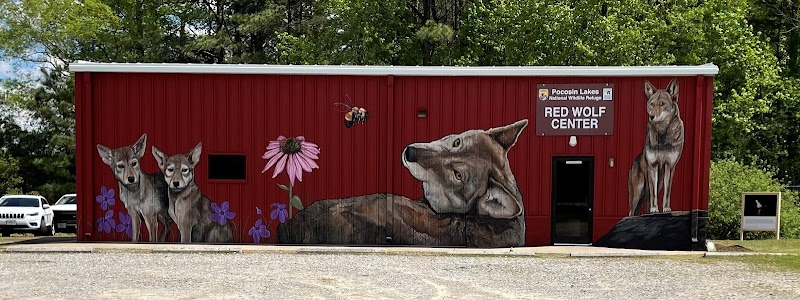Cry of the Wild: The Fight to Save North Carolina’s Red Wolves

The sound is unlike any other—a high, haunting howl that once flowed like a river through the forests and marshlands of the South. It’s a sound that once defined the wilderness, but now it’s slipping away, nearly drowned by the noise of human encroachment.
With fewer than 20 red wolves remaining in the wild, these iconic canines are among the rarest mammals on the planet. Their survival isn’t just a test of conservation science—it’s a battle for the very idea of coexistence in a crowded, noisy world.
The Red Wolf: A Ghost of the South
The red wolf (Canis rufus) is a species as unique as the landscapes it calls home. Smaller than the gray wolf but larger than a coyote, it’s known for its russet coat, long legs, and slender build—an athlete built for survival.
Historically, the red wolf roamed across the southeastern United States, from Texas to the Atlantic Coast. It was a keystone species, maintaining balance in its ecosystem by keeping prey populations like deer and small mammals in check.
By the mid-20th century, relentless hunting and habitat destruction had driven the red wolf to the brink. Farmers targeted the wolves as threats to livestock, while sprawling development replaced forests with fields and towns. By 1980, the species was declared extinct in the wild.
A Second Chance: Reintroducing the Red Wolf
In 1973, with extinction looming, the U.S. Fish and Wildlife Service took a bold step. Fourteen red wolves—the last of their kind—were captured to begin a captive breeding program. These survivors became the foundation of an ambitious reintroduction effort.
In 1987, the first red wolves were released into the Alligator River National Wildlife Refuge in eastern North Carolina. The remote location, rich with prey and far from urban centers, was seen as an ideal site for their return.
For a time, the gamble paid off. The wolves adapted to their new home, hunting, staking territories, and raising pups. By the early 2000s, the wild population grew to over 120 individuals. But the success was fragile, and a backlash was brewing.
The Struggle for Survival
Red wolves face a perfect storm of challenges:
-
Human Conflict: Misinformation fuels hostility. Many local residents view red wolves as dangerous predators, despite evidence that they rarely target livestock. Some even dismiss them as “coyote hybrids” unworthy of protection.
-
Habitat Fragmentation: As North Carolina’s wild spaces shrink, red wolves are forced into smaller, more vulnerable territories.
-
Illegal Killings: Weak enforcement of protective laws has led to a spike in illegal shootings.
By the 2010s, these pressures had decimated the population. Today, fewer than 20 red wolves roam the wild, and even this number teeters on the edge of collapse.
A Glimmer of Hope
Conservationists aren’t giving up. In 2021, the U.S. Fish and Wildlife Service unveiled a revised recovery plan with three core strategies:
-
Rewilding Captive Pups: Captive-born pups are placed in the dens of wild red wolves, where they are raised by wild parents and learn critical survival skills.
-
Expanding Safe Zones: Protected areas are being widened, giving wolves more room to roam and reducing the risk of human conflict.
-
Community Outreach: Education programs aim to foster local pride in the red wolf and dispel myths about the species.
Nonprofits like the Red Wolf Coalition and Defenders of Wildlife are also stepping up, raising awareness and pushing for stronger protections.
Why It Matters
The red wolf isn’t just a symbol of wilderness; it’s a crucial player in its ecosystem. Without predators like the red wolf, deer and other prey animals overpopulate, leading to overgrazing and habitat destruction. The ripple effects can destabilize entire ecosystems.
More than that, the red wolf represents the intersection of human and natural histories. Its survival—or extinction—will reflect our capacity to coexist with the wild.
How You Can Help
If the red wolf’s plight resonates with you, there are ways to get involved:
- Donate: Support organizations like the Red Wolf Coalition or Defenders of Wildlife.
- Advocate: Contact lawmakers to demand stronger protections for endangered species.
- Educate: Share the red wolf’s story, especially with those who may not know about its importance.
- Volunteer: Participate in local conservation efforts near red wolf recovery areas.
The Howl Lives On
In the quiet heart of North Carolina’s Alligator River Refuge, a red wolf tilts its head back and howls into the fading light. The sound is a thread of history, woven from a time when the wild thrived.
Today, that howl is also a call to action—a reminder that saving the red wolf isn’t just about preserving a species. It’s about protecting the wild spaces that remind us who we are.








